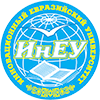Annotation:
In Kazakhstan, within the framework of the Program «Development of domestic value and
export-oriented industries», new modern dairy enterprises are being actively modernized and new
modern dairy enterprises are being created, where membrane processes are being introduced to
concentrate the components of milk. This is necessary for the rational and integrated use of raw
materials, including through the processing of secondary resources, the main of which is whey.
Improving the production processes of traditional food products and developing innovative ones is
possible only with the use of the latest technologies and technological equipment. Membrane
processes are widely used for the use of fractionation and concentration of liquid dairy products,
which allows for a new solution to the processing of raw materials and opens up opportunities in the
development of new types of food products.
The article is devoted to the issue of production and processing of whey in Kazakhstan. The
main types of membrane technologies and the advantages of their use in the dairy industry in the
Republic of Kazakhstan are considered. The role of membrane technologies in the processing of whey
is substantiated, various methods of introducing membrane processing methods to ensure the
demineralization of whey, obtaining products with high biological value and consumer properties,
reducing the cost of energy carriers, reducing the volume of raw materials in order to save transport
costs, non-waste processing of milk solids are described. , recycling water
Year of release:
2024
Number of the journal:
3(95)

 English
English Русский
Русский Қазақ
Қазақ